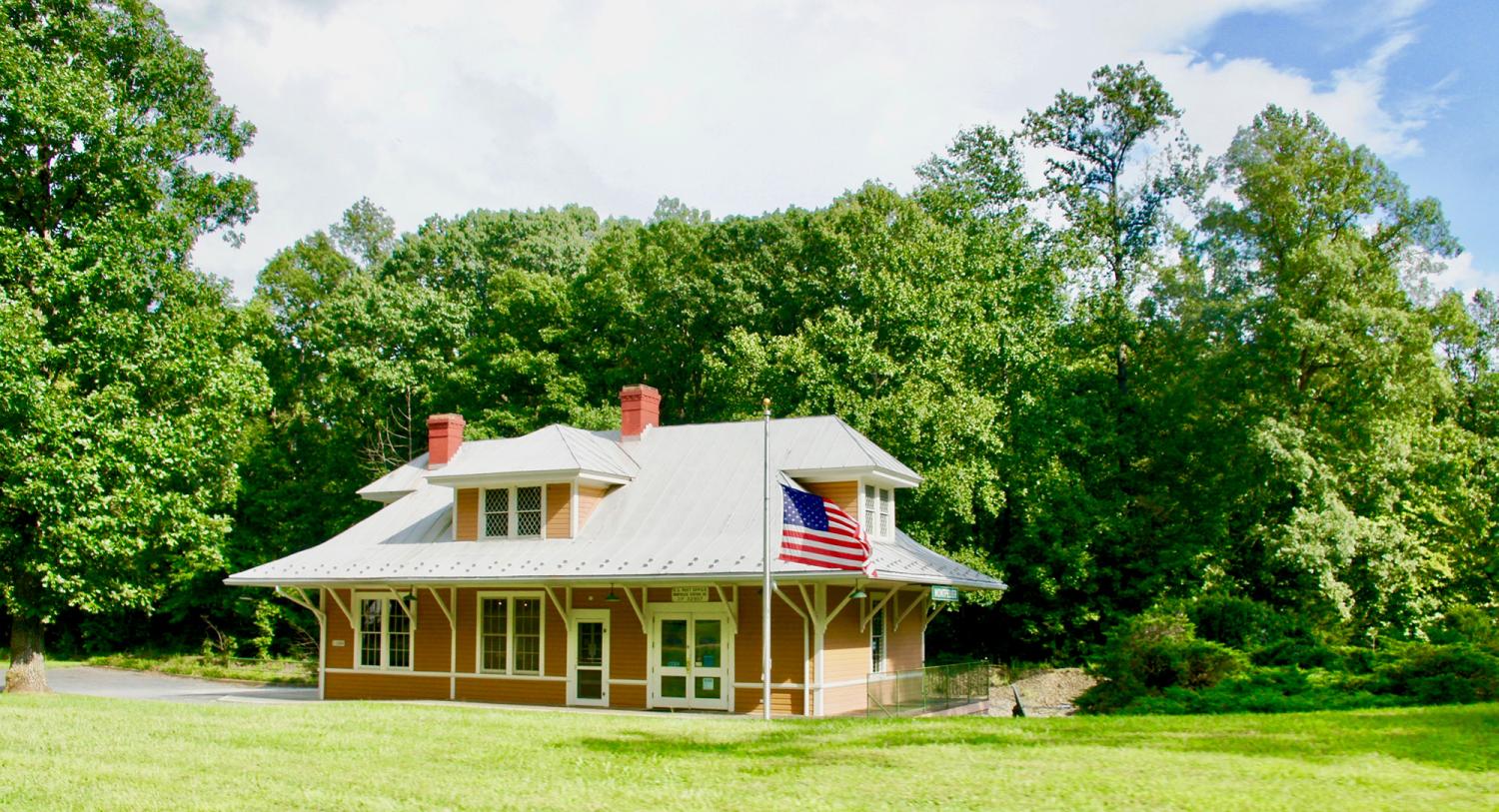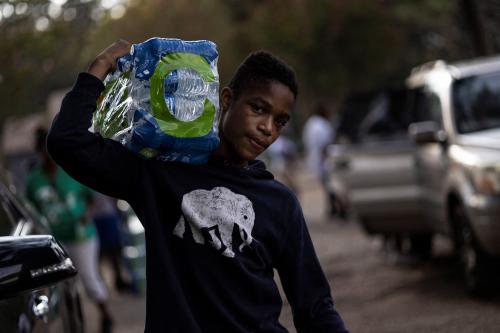Introduction
The divergence in economic outcomes across different geographic regions in the U.S. over the past two decades has spurred new interest among policymakers in pursuing place-based policies. The effects of that divergence have been especially acute in rural America: Employment and labor force participation rates in rural areas have still not recovered to pre-Great Recession levels. From most indications, rural America’s economic fortunes continue to diverge from the rest of the country.
These dynamics set forward a strong rationale for the inclusion of rural places in place-based economic programs like the $1 billion Build Back Better Regional Challenge (BBBRC), which was funded through the American Rescue Plan Act (ARPA) to boost economic recovery. A competitive grant program administered by the Economic Development Administration (EDA) in the U.S. Department of Commerce, the BBBRC awarded five-year grants between $25 million to $65 million to 21 regional coalitions in September 2022, choosing from 60 finalists and 529 initial applications.
The potential for rural places in the BBBRC
The BBBRC focuses on strengthening or growing industry clusters to broaden economic opportunities throughout a region, especially for underserved populations. In its guidance to applicants, the EDA explicitly highlighted the key role of rural areas in achieving regional success.1 This is in keeping with how the EDA articulates its Investment Priorities, stressing the importance of equity and reaching underserved communities, including rural and tribal communities. It reflects a similar recognition among rural practitioners that regional collaboration offers advantages for creating opportunities in rural places.
Yet formulating a regional cluster approach that is effective in benefiting rural places requires sensitivity to a complex set of dynamics. Almost by definition, a focus on industry clusters puts metropolitan areas at the center. In its guidance, EDA acknowledged that clusters are likely to follow a traditional hub-and-spoke model, where a metro area acts as a central hub for a coalition that reaches into or engages other communities.2
Such a model generates an inherent tension in effectively reaching and serving rural areas, since simply including them as part of a service area does not guarantee successful economic impacts there. Rural places are often less than full partners in regional coalitions; intentional interventions to meet their unique challenges related to governance capacity, distance, workforce, and access to capital are frequently necessary to enable them to receive proportionate benefits. Program parameters can also play a role. Matching funds requirements, for example, immediately place a substantial burden on rural and tribal places, which often have less fiscal buffer and less access to outside resources. Authentic engagement and trusting relationships among urban and rural leaders—cornerstones for successful inclusion—necessitate investments of time and the building of beneficial partnerships.
The BBBRC offered a unique opportunity for the applying coalitions to meaningfully include and center rural areas as they sought to strengthen economic recovery and develop new industrial clusters. An analysis of the 60 finalists helps assess the extent to which a regional placed-based competition can position rural places as implementing partners and possible beneficiaries, providing important insights as the EDA implements future programs, including the Recompete Pilot Program and Tech Hubs program.
Is rural really included?
The BBBRC Notice of Funding Opportunity explicitly named the inclusion of rural places as a consideration in its scoring criteria under the “equity” category. Applicants also presumably received some positive consideration in other scoring categories, such as “regional assets” and “levels of distress,” by including rural areas. The EDA elected to allow coalitions to self-identify their rural populations and relied upon qualitative assessments of their inclusion through conversations and virtual site visits. This honored the challenge of defining rural in America and provided a welcome platform for self-determination. At the same time, the EDA did not communicate how standards related to rural places might affect its decision-making during the competitive process.
To better understand the extent to which rural areas were included among the 60 finalists that received $500,000 planning awards, we experimented with different quantitative approaches, which yielded very different impressions of the level of rurality.
Rural County Share: The EDA required each applicant to define the geographic service area that would benefit from the proposed strategy. Measuring the proportion of rural counties within the service areas—self-identified by coalitions—provides one crude metric. When separating the coverage areas of the 60 finalists into metro and non-metro counties,3 25 finalists (42 percent of the total pool) had a geographic share that was at least 50 percent non-metro.4 Eleven became awardees—more than half of the final set of successful applicants.
Rural Population Share: Measuring the proportion of rural people served changes this dramatically. Only seven finalists, 12 percent of the total pool, had a population share that was at least half rural.5 Only two became awardees, less than 10 percent of the final set of awardees.
The difficulty of balancing multiple dimensions demonstrates the pitfalls of relying solely upon quantitative metrics to determine the rurality of an application. For applicant regions centered around a metropolitan hub, successfully reaching and serving the rural areas named as part of the coalition implies countering the strong position of the hub and taking an approach that requires intentional investment of political and human capital. Assessing the extent of such intentionality toward rural inclusion is very difficult to capture quantitatively.
While a laudable number of applicants cast a wide net and included rural places in their geographic service areas, the density of population in the urban areas serving as hubs for their regional coalitions suggests a strong magnetic pull that creates a nexus of political attention, leadership, decisionmaking, and beneficiaries.
Qualitative review: To glean further insights, we conducted a qualitative review. The first part of the review focused on the extent to which rural areas were included in the clusters and were a meaningful part of the intended outcomes for the regional coalition. Key elements that proved valuable included the depth and geographic breadth of the market failure to be addressed; inclusion of rural representation in the governance structure of the applying coalition; the extent of the coalition’s projects and resources to be distributed in rural places; and concrete employment and business opportunities to be created in, or proximate to, rural places.
A robust framework for evaluating rurality should also include—to the degree possible—the likelihood of meaningful impact in those rural areas. Considerations that helped assess the extent to which the benefits might actually reach their rural areas included the physical presence of staff and leadership as well as the strength of relationships to leaders, organizations, and residents in the named rural areas; past experience and track record of success of those partners in working in those communities; and demonstrated sensitivity to their unique challenges, opportunities, and level of capacity. We also attempted to determine the extent to which economic value and wealth were intentionally being built, located in, or owned by entities or people in the named rural communities.
While completing the qualitative review, the pool of applicants fell into three major categories, defined as:
- Rural-Led, Rural-Centered: The lead applicant is either located in a rural community or has an explicit mission and/or proven track record of success working in rural communities. Significant cluster activities are located in rural places and are meant to benefit rural communities specifically, even through local ownership and/or wealth creation.
- Metro-Led, Rural-Relevant: The lead applicant is not located in a rural community nor has an explicit rural mission. However, while the hub may be located in a metro (with significant cluster activities in the metro), there are also a meaningful number of cluster activities and economic benefits located in rural places or intended to benefit rural places.
- Metro-Led, Metro-Centered: Lead applicant is not located in a rural community. The bulk of the cluster activities and the economic benefits are located in the central metro area, though rural areas may be included in the identified service area.
Rural-Led, Rural-Centered: Through this review, three awardee coalitions—or 14 percent of the awardees—were identified as rural-led and rural-centered, with rural places the major focus of their proposed outcomes: the Alaska Mariculture Center, the Mountain|Plains Regional Native CDFI Coalition, and Appalachian Climate Technologies (ACT Now). Three other finalists6 were also rural-led and rural-centered, meaning 10 percent of all finalists fit this category.
While both the Alaska Mariculture Center and the Mountain | Plains Regional Native CDFI Coalition scored very highly on all the quantitative scales for rurality, ACT Now ranked behind several other awardees on rural county share and rural population share. However, while local businesses, associations, and two major universities are members of its regional coalition, its coalition leads are nonprofits with proven track records of impact in rural places, with strong trusting relationships and physical presence there. Our confidence level in the coalition’s ability to have a positive impact in its 21 rural counties is high. This highlights the hazards of relying solely upon quantitative metrics as a measure of rural relevance.
Given the project design, experiences, and existing relationships of the lead coalition partners, all the rural-led and rural-centered awardees and finalists indicated a high likelihood of meaningful engagement and potential impact in their rural places. They intentionally center rural inclusion through accountability measures, governance, and trusted community partnerships, building relationships through tribal connections (where relevant), community advisory boards, and regional growth plans designed to authentically facilitate community engagement and build local leadership.
Metro-led, Rural-Relevant: The lead partners for the rest of the coalitions that include rural areas as an important segment of their clusters are located in a metro area. The majority of the lead partners for these metro-led coalitions are institutions of higher education or state agencies. This set of clusters includes eight additional awardees and seven additional finalists. Thus, on the face of it, about one-third of the finalists focus a meaningful segment of their coalition on rural places, and almost half of the ultimate awardees.
Yet further examination raises important questions about the ability of these coalitions to generate the envisioned economic impacts in the rural places that are part of their clusters within the specified five-year implementation period. Many of these metro-led coalitions will depend upon new partnerships, relationships, or programs to reach the rural places named as part of their coverage areas. The extent to which rural partners have decisionmaking power within the governance of these coalitions varies—in some cases it is fairly limited—and the track record of success of the coalition’s participants in meeting the unique needs of these rural areas is less apparent. The level of rural impact is likely to vary considerably among this set of awardees and seems less certain compared to the rural-led coalitions.
Finding regional models that cross rural and urban boundaries, yet result in significant positive impact in rural places, will be crucial to bringing economic opportunity to rural places at scale. This group of metro-led, rural-relevant BBBRC grantees offer an important learning opportunity for understanding the types of governance, decisionmaking, and collaborative structures that can result in high-performing regional coalitions with effective distributional impact.
Metro-led, Metro-Centered: The rest of the awardees and finalists are metro-led, and most of the meaningful cluster activity will be concentrated in metro areas. While the activities may have intended benefits for people in surrounding rural areas, most of the sustainable employment and the generated wealth will geographically remain outside of rural places.
Key takeaways and recommendations
EDA’s recognition and commitment to ensuring that rural communities are included in new approaches to supporting regional economic development are commendable. Applying several insights from the BBBRC process will help advance the equitable participation and integration of rural places into future efforts to incentivize and support regional strategies:
- Incorporate rural expertise and qualitative analysis to assess rural relevance. EDA can offer more specificity on how it intends to measure rurality, and the level of consideration rurality will receive during program decisions, to sharpen rural impact strategies within regional coalitions. While a reasonable starting point, quantitative metrics are limited in describing the true breadth and depth of rural inclusion. Incorporating qualitative dimensions such as the level of rural participation in governance; the track records of participants’ success in rural places, the strength of existing relationships with local rural leaders, the physical presence of partners, and the portion of resources targeted to rural areas offer a much more robust picture, both of rural inclusion and potential rural impact. Including reviewers who are acknowledged experts in rural development and having them participate in in-person site visits that are conducted in the named rural areas will significantly increase the ability to evaluate the level of trust built with local rural officials and assess the coalition’s sensitivity to their capacity constraints. As EDA resources grow, adding staff positions with specialized rural development expertise is highly recommended.
- Establish rural set-asides or preferences. The BBBRC proves that targeting can result in powerfully effective rural-led coalitions, evidenced by the strength of the clusters and the high quality of the projects of the three rural-led awardees, which fit either a stated preference (reaching underserved tribal populations) or a special consideration ($100 million targeted to coal-affected communities). Given constraints in staffing, institutional capacity, and level of project readiness, intentional targeting is a strong tool to enable proportionate and adequate access for underserved rural communities. Many rural communities generally have less governing capacity than metro areas, with volunteer elected officials, thinly staffed city halls, and fiscally tight budgets. They do not have the existing resources or staffing to immediately mobilize and take advantage of opportunities such as BBBRC, so stated preferences, targeted outreach, and increased time to respond during the initial application process can help level the playing field.
Since rural-led coalitions are well-positioned to ensure rural areas will be well-served within their regional cluster, EDA may consider a programmatic design that incentivizes or supports regional models with rural hubs at the center. Even the rural-led coalitions that received awards are having to stretch limited resources during early implementation, given EDA’s policy to reimburse expenses.
A two-step application process such as the one used for the BBBRC, in which finalists were provided resources and technical assistance to strengthen their proposed clusters, could also be further leveraged. The additional time and assistance can strengthen a coalition’s ability to facilitate stronger rural participation, especially if the technical assistance is focused on refining programmatic strategies that respond to the unique challenges facing those rural areas. This could be especially useful for helping metro-led coalitions improve the likelihood of impact in their rural coverage areas, especially if incentives and programmatic considerations are encouraged by EDA, and these coalitions are supported with state-of-the-art thinking on inclusive processes.
- Modify program design to promote innovative practices incorporating rural places. Signaling openness to new models of regionalism and flexibility within existing approaches such as the hub-and-spoke model may facilitate innovation that will serve rural places well. The BBBRC offered flexibility regarding the composition of the coalitions and the institutional type of lead applicants; at the same time, following the traditional hub-and-spoke model did not easily facilitate rural-to-rural cooperation or result in many finalists with rural institutions serving in the lead role. Anticipating these constraints might have enabled EDA to adapt programmatic considerations to facilitate greater rural leadership.
Other federal programs may have less flexibility in working with certain types of institutions or may be less constrained in focusing on a particular industry within a regional coalition; nonetheless, authentic rural participation will be strengthened by a sensitivity to rural characteristics as well as the power dynamics across different levels of governance. For example, networked models or coalitions based on common characteristics or organizing principles, such as the Mountain | Plains CDFI Coalition, may enable greater and deeper participation of rural areas than strictly geographically proximate coalitions. Creativity and innovation in defining a region can help reach less densely populated places that are often left out of regional programs.
- Increase transparency about the participation of rural places. Ensuring that outcome targets, indicators of progress, and impact measures are disaggregated by geography and location will increase the equity, accountability, and transparency of whether underserved rural populations are being reached and the extent to which benefits are being widely shared throughout the clusters. Given that the BBBRC is, by its very design, a place-based policy, including location in addition to other important demographic characteristics will enable a learning agenda and make an important contribution to general knowledge about the kinds of interventions that are most effective in balancing impact along a rural-urban continuum.
The BBBRC represents a bold innovation in place-based industrial policy, incentivizing proximate jurisdictions and partners to work together as a regional cluster to leverage unique local assets and accelerate economic and social development. EDA’s approach also incentivized applicants to seriously consider rural inclusion and provided flexibility to facilitate this. BBBRC implementation offers an enormous opportunity to advance the knowledge base of how regional approaches can benefit—or disadvantage—rural places. Remaining sensitive to the power dynamics, capacity constraints, and the unique value of rural partners will be important as projects are executed—and acting upon lessons learned and insights will inform future program design and regional models that successfully expand economic opportunity and community development in rural places.
-
Acknowledgements and disclosures
This report was prepared by Brookings Metro using federal funds under award ED22HDQ3070081 from the Economic Development Administration, U.S. Department of Commerce. The statements, findings, conclusions, and recommendations are those of the author(s) and do not necessarily reflect the views of the Economic Development Administration or the U.S. Department of Commerce.
-
Footnotes
- EDA Build Back Better Notice of Funding Opportunity, pg. 7.
- EDA Build Back Better Notice of Funding Opportunity, pg. 5.
- Non-metro counties, as defined by the Office of Management and Budget (OMB), are often used as a proxy for rural.
- Including the District of Columbia and Puerto Rico, there are 2015 non-metro counties as of 2020, representing 62.6 percent of counties nationally.
- As of 2020, 46 million people lived in non-metro counties, representing approximately 13.9 percent of the total U.S. population.
- Hawai’i Build Back Better Coalition, PA Wilds Outdoor Recreation Industry Cluster Development, and Southeast Alaska Sustainable Forest Products Cluster
The Brookings Institution is committed to quality, independence, and impact.
We are supported by a diverse array of funders. In line with our values and policies, each Brookings publication represents the sole views of its author(s).





